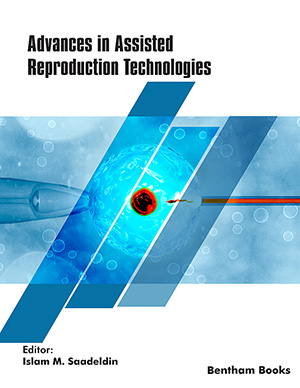Abstract
Background: H7N9 influenza virus poses a high risk to human beings, and proteomic evaluations of this virus may help better understand its pathogenic mechanisms in human systems.
Objective: This study aimed at determining membrane proteins related to H7N9 infection.
Methods: In this study, we infected primary human alveolar adenocarcinoma epithelial cells (A549) with H7N9 (including wild and mutant strains) and then produced enriched cellular membrane isolations, which were then evaluated by western blot. The proteins in these cell membrane fractions were analyzed using the isobaric Tags for Relative and Absolute Quantitation (iTRAQ) proteome technologies.
Results: Differentially expressed proteins (n = 32) were identified following liquid chromatography- tandem mass spectrometry, including 20 down-regulated proteins, such as CD44 antigen and CD151 antigen, and 12 up-regulated proteins, such as tight junction protein ZO-1 and prostaglandin reductase 1. Gene Ontology database searching revealed that 20 out of the 32 differentially expressed proteins were localized to the plasma membrane. These proteins were primarily associated with the cellular component organization (n = 20) and enriched in the reactome pathway of extracellular matrix organization (n = 4).
Conclusion: These findings indicate that H7N9 may dysregulate cellular organization via specific alterations to the protein profile of the plasma membrane.
Keywords: Proteomics, H7N9, plasma membrane, bioinformatics, iTRAQ, R software.
[http://dx.doi.org/10.1016/S0140-6736(13)61125-3] [PMID: 23726392]
[http://dx.doi.org/10.1056/NEJMoa1304459] [PMID: 23577628]
[http://dx.doi.org/10.1056/NEJMoa1304617] [PMID: 23614499]
[http://dx.doi.org/10.1056/NEJMoa1305584] [PMID: 23697469]
[http://dx.doi.org/10.1371/journal.pone.0081136] [PMID: 24278391]
[http://dx.doi.org/10.1038/nature12515] [PMID: 23965623]
[http://dx.doi.org/10.1126/science.1254664] [PMID: 24744345]
[http://dx.doi.org/10.1016/j.jcv.2013.09.004] [PMID: 24091087]
[http://dx.doi.org/10.1016/j.coviro.2016.01.020] [PMID: 26922715]
[http://dx.doi.org/10.1017/S0950268815001570] [PMID: 26205078]
[http://dx.doi.org/10.1016/j.tim.2017.06.008] [PMID: 28734617]
[http://dx.doi.org/10.1016/j.meegid.2014.10.016] [PMID: 25446940]
[http://dx.doi.org/10.4142/jvs.2017.18.S1.269] [PMID: 28859267]
[http://dx.doi.org/10.1016/j.meegid.2017.09.027] [PMID: 28943407]
[http://dx.doi.org/10.1038/srep02318] [PMID: 23897131]
[http://dx.doi.org/10.3201/eid2003.131271] [PMID: 24572739]
[http://dx.doi.org/10.1101/cshperspect.a038349] [PMID: 32205415]
[http://dx.doi.org/10.1016/j.meegid.2021.104993] [PMID: 34242774]
[http://dx.doi.org/10.1186/s12985-020-01464-1] [PMID: 33430903]
[http://dx.doi.org/10.1007/s11684-020-0814-5] [PMID: 33860875]
[http://dx.doi.org/10.1016/j.ejphar.2014.05.028] [PMID: 24877694]
[http://dx.doi.org/10.1021/bi400677n] [PMID: 24015903]
[http://dx.doi.org/10.3390/v11020171] [PMID: 30791550]
[http://dx.doi.org/10.3390/v13030522] [PMID: 33810083]
[http://dx.doi.org/10.3109/1040841X.2010.536523] [PMID: 21438845]
[http://dx.doi.org/10.1007/s00705-015-2452-9] [PMID: 26016443]
[http://dx.doi.org/10.3390/v5061431] [PMID: 23752648]
[http://dx.doi.org/10.1128/mSphere.00552-19] [PMID: 31434749]
[http://dx.doi.org/10.2174/187152607783018745] [PMID: 18220960]
[http://dx.doi.org/10.1371/journal.pone.0033180] [PMID: 22438897]
[http://dx.doi.org/10.3390/microorganisms8050778] [PMID: 32455845]
[http://dx.doi.org/10.1517/14728222.2015.1006198] [PMID: 25600759]
[http://dx.doi.org/10.1128/JVI.00111-21] [PMID: 33952646]
[http://dx.doi.org/10.1016/j.coviro.2015.04.010] [PMID: 26079652]
[http://dx.doi.org/10.1093/infdis/jix235] [PMID: 28510725]
[http://dx.doi.org/10.1371/journal.pone.0124985] [PMID: 25942469]
[http://dx.doi.org/10.15252/emmm.201809528] [PMID: 30498026]
[http://dx.doi.org/10.1002/pmic.201400309] [PMID: 25641917]
[http://dx.doi.org/10.1371/journal.pone.0156017] [PMID: 27223893]
[http://dx.doi.org/10.3390/ijms161125934] [PMID: 26528969]
[http://dx.doi.org/10.1021/acs.jproteome.5b00196] [PMID: 26381135]
[PMID: 20027280]
[http://dx.doi.org/10.1371/journal.pone.0107235] [PMID: 25222852]
[http://dx.doi.org/10.1159/000443087] [PMID: 27035671]
[http://dx.doi.org/10.1016/j.virol.2010.12.003] [PMID: 21237476]
[http://dx.doi.org/10.1021/pr3006342] [PMID: 22985253]
[http://dx.doi.org/10.1038/emi.2014.80] [PMID: 26038501]
[http://dx.doi.org/10.1101/gr.155499.113] [PMID: 23674306]
[http://dx.doi.org/10.2174/1570162X17666190506155222] [PMID: 31057110]
[http://dx.doi.org/10.1186/1477-5956-8-12] [PMID: 20222986]
[http://dx.doi.org/10.1093/abbs/gmu075] [PMID: 25187410]
[http://dx.doi.org/10.1016/j.ijid.2017.08.006] [PMID: 28823846]
[http://dx.doi.org/10.1186/1471-2407-10-206] [PMID: 20470422]
[http://dx.doi.org/10.1038/srep12120] [PMID: 26175278]
[http://dx.doi.org/10.1021/pr401292p] [PMID: 24450392]
[http://dx.doi.org/10.1021/pr400307u] [PMID: 24004147]
[http://dx.doi.org/10.1016/j.jprot.2011.09.027] [PMID: 22008608]
[http://dx.doi.org/10.1021/pr700747q] [PMID: 18067251]
[http://dx.doi.org/10.1038/nprot.2016.136] [PMID: 27809316]
[http://dx.doi.org/10.1042/BSR20190904] [PMID: 31110078]
[PMID: 27559289]
[http://dx.doi.org/10.1089/omi.2011.0118] [PMID: 22455463]
[http://dx.doi.org/10.3389/fgene.2020.00273] [PMID: 32265992]
[http://dx.doi.org/10.1016/j.jprot.2017.08.002] [PMID: 28782718]
[http://dx.doi.org/10.1101/gr.1239303] [PMID: 14597658]
[PMID: 31191840]
[http://dx.doi.org/10.1016/j.virusres.2015.09.006] [PMID: 26365680]
[http://dx.doi.org/10.1007/s11427-011-4177-7] [PMID: 21706410]
[http://dx.doi.org/10.1186/s12985-021-01512-4] [PMID: 33602268]
[PMID: 30001579]
[http://dx.doi.org/10.4103/jgid.jgid_159_16] [PMID: 29910565]
[http://dx.doi.org/10.1021/acs.jproteome.7b00815] [PMID: 29558158]
[http://dx.doi.org/10.1016/j.virusres.2019.197643] [PMID: 31233774]
[http://dx.doi.org/10.1089/aid.1996.12.1615] [PMID: 8947296]
[http://dx.doi.org/10.1128/JVI.06872-11] [PMID: 22491449]
[PMID: 24966931]
[http://dx.doi.org/10.3390/v6020893] [PMID: 24553111]
[http://dx.doi.org/10.1186/1743-422X-4-62] [PMID: 17572908]
[http://dx.doi.org/10.1128/JVI.00519-13] [PMID: 23637395]
[http://dx.doi.org/10.3390/v12050487] [PMID: 32357558]
[http://dx.doi.org/10.1002/cam4.1778] [PMID: 30259695]
[http://dx.doi.org/10.1128/JVI.80.10.4890-4900.2006] [PMID: 16641280]
[http://dx.doi.org/10.1523/JNEUROSCI.0061-08.2008] [PMID: 18667611]


























